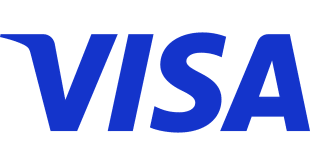Cardless ATM technology that enables consumers to make cash withdrawals is now available via Android Pay at select Bank of America Corp. locations, the banking giant announced Wednesday at Google’s annual IO conference.
BofA says the service has initially been available at some ATMs in Boston, Charlotte, N.C., New York City, San Francisco, and Silicon Valley, but it plans to expand cardless ATM withdrawals to 2,400 machines across the country this month, with another 2,600 added by yearend.
Consumers can make cash withdrawals at compatible ATMs using an app. The addition of Android Pay is notable because to date most cardless ATM transactions require a bank’s app. Consumers select their BofA debit card in the Android Pay wallet and hold the phone over the contactless symbol on the ATM. They enter the PIN on the ATM and complete the transaction. Smart phones as well as ATMs must have near-field communication (NFC) technology to use the service.
Android Pay is in fierce competition with Apple Inc.’s Apple Pay and Samsung Electronics Co. Ltd.’s Samsung Pay for consumer and merchant acceptance. Neither of the latter two services offers cardless ATM withdrawals. Generating usage has challenged all of the mobile-payment services.
As of March, 18% of credit card holders loaded a payment card into their Apple Pay wallets. Samsung Pay and Android Pay, which launched about a year after Apple Pay, had adoption rates of 12% and 11%, respectively.
Meanwhile, PayPal Holdings Inc. explained its strategy for growth at its first analyst day since becoming a publicly traded company last year. It expects its revenue to grow 16% to 19% in 2016 over 2015. It also wants to increase payments volume by growing the typical frequency of transactions per user from two to three times per month to two to three times per week.
Generally, analysts liked what they heard. “We remain confident in PayPal’s prospects and think it will meet or exceed this target over the long term,” wrote Lawrence Berlin, an analyst at First Analysis Securities Corp., a Chicago-based equities firm, in a research note.
“PayPal sees a shift in the payments universe from the payment being an event in itself to being a part of the consumer experience,” he wrote. “PayPal wants to cater to the two ends of this—the consumer and the merchant. Its core offerings, such as the ubiquitous button on Web sites suggesting one pay with PayPal, remain central to the company’s consumer experience. PayPal wants to build on this and take usage from two to three times per month for an active user to two to three times per day.”
PayPal has 170 million consumer accounts and 14 million merchant accounts. Its first quarter 2016 payment volume was $81.1 billion, a 31% increase from the year prior amount of $63 billion. Transaction volume grew 26% from 1.12 billion in 2015 to 1.41 billion in 2016’s first quarter.
PayPal’s 2013 acquisition of Braintree was an inflection point, said Robert Napoli, an analyst at William Blair & Co. LLC, a Chicago-based investment firm, in a research note. “Management is clearly focused on creating tools to capture the movement of money, which is a massive global market,” Napoli said.
“We continue to believe PayPal’s large and growing user base, its rapid growth, and its $12.2 billion of funds receivable (essentially consumer deposits) are testament to consumers’ trust of PayPal and the value PayPal brings to the payments industry,” Napoli noted. “We remain comfortable that management will meet or beat its long- term growth targets and believe increasing customer usage from two to three transactions per month to two to four per week remains one of the largest opportunities at PayPal.”



